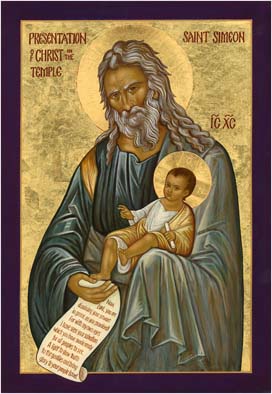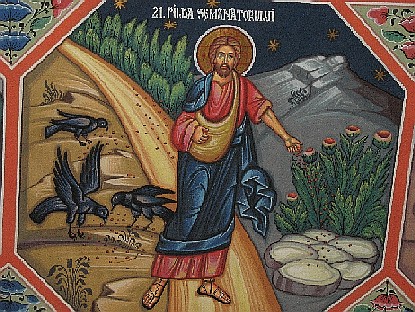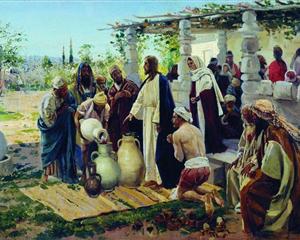This post was writtten by Brandon Rappuhn, Marketing Copywriter at Faithlife.
Does anyone else experience feelings of melancholy while praying through this mystery?
After three joyful mysteries related to the divine birth of the Messiah, the holy Son of God, the Presentation brings me feelings of joy, but also melancholy. This mystery also uniquely announces the purpose of Christ’s mission in theological and physical terms: to fulfill the old laws, to bring open the kingdom of God to the Gentiles, and finally, to die for the sins of his people.
This mystery comes from the Gospel of St. Luke (Lk 2:22–38). Three major events occur in this mystery, any one of which provides enough to contemplate for the duration of ten Hail Marys.
Jesus Begins Fulfilling the Old Laws
Jesus is presented before the Lord in accordance with the Jewish law. St. Luke is explicit, perhaps partly for the benefit of his non-Jewish readers, in that every male “shall be consecrated to the Lord” and that sacrifice is needed. Not only is it significant that a sacrifice is given, but the matter of the sacrifice carries its own significance, as well. Church Father Venerable Bede (672-735) explains the meaning of this sacrifice:
Now this was the victim of the poor. For the Lord commanded in the law that they who were able should offer a lamb for a son or a daughter as well as a turtle dove or pigeon; but they who were not able to offer a lamb should give two turtle doves or two young pigeons. Therefore the Lord, though he was rich, deigned to become poor, that by his poverty He might make us partakers of His riches.
The Lord, rich in terms of spiritual wealth and holiness, made himself poor in terms of worldly wealth and material possessions, so that, through him, he could share with us the wealth of holiness. A faithful Jew, Mary upheld the letter of Jewish law by presenting him to the priest with their humble offering of sacrifice. Mary and Joseph would continue throughout their life to raise the child Jesus in accordance with God’s laws and traditions. After all, Jesus did not come to abolish the law and the prophets, but to fulfill them.
Jesus’ Messianic Kingship is Predicted

Simeon was an elderly, devout man who awaited the coming of the Messiah. When Mary brought Jesus to the temple, Simeon was filled with the Holy Spirit. Simeon knew that the Messiah for whom he had waited for was upon him, and Simeon he rushed to greet him Lk 2:25. Simeon then predicts the purpose of Christ’s mission, saying, “For my eyes have seen your salvation, which you prepared in the sight of all the peoples, a light for revelation to the Gentiles and glory for your people Israel.” He and Anna, the prophetess, recognize that the “redemption of Jerusalem” was at hand. “Behold, this child is destined for the fall and rise of many in Israel,” Simeon said. And Jesus sets himself up not only as king of the Jews, but king of the Gentiles as well; for the first time, opening the doors to the kingdom of God for those beyone the nation of Israel.
The Cross is Foreshadowed
Simeon further predicts one final thing, which is the hardest truth of them all. To Mary, he says, “and you, yourself, a sword will pierce” Lk 2:35. Mary herself will not be unaffected by Israel’s reaction to Jesus, but she hears and obeys Jesus by not intervening during his trial and crucifixion Lk 11:27-28.
In the midst of the joyful mysteries of the infancy and childhood of Jesus, we find a mysterious foreshadowing of his crucifixion. At this point in the mysteries, considering the crucifixion while Christ is still a child may feel disturbing and even shameful. But if we are to think of Christ as our king, we must also think of his cross as his throne. Only then do we take Christ as he is: the lowly king Phil 2:5–8, the Messiah of nations Phil 2:10, and the ransom of his people.
For now, while we’re still praying the joyful mysteries, our Savior is an innocent child, with his whole life ahead of him. Yet, as I pray this mystery, I can’t help but think of the worldwide mission ahead of Jesus, with the cross planted firmly at the end of the long road.
Let us pray the rest of these mysteries, remembering where Christ came from, where he is headed, and that he will return again.




